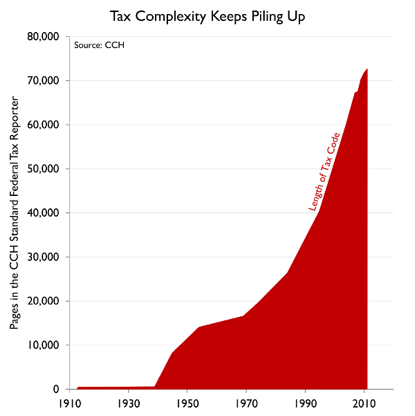
ESTATE PLANNING PARALYSIS: Indecision, Procrastination, and Over-choice

State and federal tax laws regarding estate and gift planning are pretty straightforward—at least on the surface, but the efficacy of their applications differ between cases. For example, testamentary charitable lead trusts are a good option for some donors, but just a few. Digging into the complexities of trusts and estates can quickly become mind-boggling. Should you create a trust? If you do, should it be revocable or non-revocable? If you have high charitable intent, should you create a charitable trust, a will, or use a simple designated beneficiary form? Which giving strategy will best correspond to the donors’ objectives, values, and concerns?
The rules and regulations governing charitable trusts have become more challenging over time. §170 of the Internal Revenue Service Code is merely a 62-page summary of the General Rules and Regulations governing qualified deductions (including designated gifts from trusts). However, the regulatory nuts and bolts are in the myriad of accompanying IRS Publications. Explaining the options and complexities can quickly overwhelm most donors and leave them paralyzed with indecision.
Some charitable trusts seem less complicated than others. Nonetheless, if you don’t have a thorough understanding of what you’re doing, a gift planner can make a mistake that will cost the donor and/or the designated charities a lot of money.
CHOICE OVERLOAD 
One of the most distinct factors separating our modern existence from the lives of our ancestors is the almost endless collection of choices we face. Dan Pilat and Dr. Sekoul Krastev authored a paper entitled “Choice Overload,” describing how people become overwhelmed when they are presented with too many options. While we tend to assume that more choices and more flexibility are good things, their research shows that, in many cases, people have a harder time choosing from a large array of options. Choice overload (also known as over-choice or choice paralysis) can cause donors to delay decision-making. Every experienced gift planner has seen this many times. Considering the plentiful options available proves to be mentally exhausting, a factor that increases with age and our ability to quickly process complex decisions. Having more options also leads to decreased satisfaction, lower confidence in our ability to choose, and a higher chance we will regret our decisions. Not only does this make the experience more draining, but it also makes us more likely to choose nothing and instead put off the decision entirely. Occasionally, potential donors will abandon the process and say, “We’ll just let our children work it out.”
Clearly, this indecision has a major impact on charitable estate planning. Not long after beginning my career as a planned giving officer, I set up a meeting with one of our major donors. I came armed with my customized estate planning proposal. We sat down on his couch, and I placed the 90-page printout on the coffee table to begin going through it. I was so excited about the plan I had formulated that I barely noticed Mr. Y leaning back on the sofa, no longer following along with my presentation. I forged ahead, explaining how the assortment of charitable trusts would work. He had lost interest several pages back and was just sitting there looking at me. Not only was my presentation overloaded with unorganized complexity, it was thoroughly transactional and conveyed a lack of sincerity.
SIMPLIFYING COMPLEX DECISIONS
Boomers with a considerable inheritance to bestow are hesitant to dump a small fortune onto their children and grandchildren’s laps without sufficient guidance. Two of their chief concerns are end-of-life experience expenses and various kinds of inheritance wars.
Family members who have gotten along with each other for years often undergo radical changes when there are substantial assets to divide. It’s not always about money; it could be houses, land, or even sentimental items. These concerns among the grantors are very real, and they often cause paralysis, especially when the conversation is too complex or there are too many choices or decisions to make.
I’m privileged, along with many other planning professionals, to have regularly enabled donors to move beyond choice overload. The Thompson & Associates process has no trademark secrets, and any planning officer can ask similar questions and start similar conversations.
First of all, focus on the donor, not the gift.
Mr. Y finally got my attention by simply tapping me on the shoulder.
“Eddie,” he said, “the only thing you are interested in is my money.”
Rather than defend myself, I replied, “You know, Mr. Y, you’re exactly right. But I promise you this: I will never come back with any kind of proposal or request until I can figure out how it will benefit you and your family.”
Being genuinely donor-centric was probably the most important gift-planning lesson I’ve ever learned.
The best gift-planning professionals do not focus primarily on the donation, the organizational needs, or even the organizational story. They are primarily tuned into the needs, desires, and values of their donors. Being genuinely donor-centric was probably the most important gift-planning lesson I’ve ever learned.
Secondly, don’t hurry.
Our estate planning process requires several private meetings where individuals and families discuss their objectives, values, and hesitations. There are giving techniques that are far more (or far less) beneficial for the charities and the donors. Sometimes donors have to balance the most effective giving with the most effective wealth transfer to their families, often later in the process. Initially, we keep things simple by constructing a gift planning mosaic, one piece at a time. In over 40 years of assisting in the oversight of countless estate gifts, I have seen abundant instances suggesting that the right story is what enables gift planners to overcome decision-making paralysis. See the post entitled TELL TO WIN: Finding the Right Story.
Thirdly, don’t push.
I’ve made more than my share of mistakes during four decades of fundraising and charitable estate planning (see HARD LESSONS: My Ten Biggest Mistakes). There is, however, one case that has haunted me throughout my entire career.
I don’t remember the organizational context—whether it was a financial crisis, a capital campaign, or simply pressure to meet an annual funding goal. I still remember vividly how hard I pushed for the gift. Eventually, the donors agreed to my gift-planning proposals but they later regretted it. They felt manipulated.
It changed the trajectory of my career and ethos. A couple made a gift that represented a significant percentage of their estate. About two years later, they ran into some financial complications. On a subsequent visit, they said, “We probably should have kept that money. We really need it now.” They asked, “Is there any way to get it back?” The charitable contribution was set up as an irrevocable gift with immediate tax benefits for the donors. It broke my heart to tell them no.
They were so gracious about it, which made it hurt even more. The nonprofit was very happy, but I just felt like dirt. They both died a few years later, so it never became a real problem for them. However, it lingered on as a big problem for me. I couldn’t work for a nonprofit anymore if I could not make the donors’ objectives, values, and priorities my primary focus. As a result of this painful experience, I founded Thompson & Associates.
Fourthly, we simplify the process with three essential questions:
Question #1: Do you already know what percentage of your assets you would like to give to your children?
This is often a complex decision because it’s not just a matter of how much donors can give their children but when and how much they should give. At some point, and under certain circumstances, an excessive amount of inherited wealth becomes counterproductive. Parents’ good intentions can quickly turn into a series of unintended consequences. What you impart to the next generation about the meaning, value, and purpose of wealth is far more significant than the amount you leave to them—be it great or small.
Question #2: What percentage of your children’s total inheritance would you like to give outright at death, give as an ongoing income stream, and/or give as lump-sum payments over a period of time?
I’ve seen a change over the last few years. Approximately half the donors with whom I work are either choosing to limit the amount they give their children or spread it out over a number of years.
Question #3: Would you prefer the social capital that you cannot transfer to your family go to the Internal Revenue Service or would you rather give it directly to a charity that you choose?
Rarely do I ever hear donors say they would rather invest their social capital with the IRS. They opt to give to charities because they believe the money will be used more efficiently and in ways that are consistent with their core values.
Lastly, we define success as donors understanding their estate plan and how it corresponds to their values and priorities.
One of the most rewarding projects with which I have been involved had a surprise ending. A hospital foundation had contracted me to introduce charitable estate planning possibilities to a select group of donors. There was no pressure on the donors nor me. I got paid the same regardless of what they did or to whom they gave—whether I spoke with twenty people or two.
In one part of our conversations, I slowly constructed an estate planning mosaic, piece by piece, concept by concept, illustration by illustration. At the end of the process, these donors were absolutely thrilled at what they had done, primarily because they understood it and, secondly, because every element of the plan was linked to a deeply held belief and desire.
We could have stopped there and called it a great win. However, in that last meeting, the donors wanted to go a step further. They arranged for their children to join us so they could understand how mom and dad were planning to give away $3.6 million. As you might imagine, the children (particularly the oldest son) were not predisposed to share in all the philanthropic excitement. In their minds, it was their inheritance being given away. The son came in and sat down with crossed arms, clenched teeth, and a fixed frown on his face. He said nothing, but his body language was screaming.
As his parents went through the plan, he began to soften his defiant posture. Then he began asking questions. By the time the parents were finished with their explanations, he was leaning over the table, talking enthusiastically about how their family was going to change the world and wondering how this could be passed onto their own children. For the most part, I was merely a spectator, but for a person like me dedicated to meeting donor needs through charitable estate planning, watching that couple explain the plan to their children was about as good as it gets.
Watching that couple explain the plan to their children was about as good as it gets.
Presenting donors with the large scope of options as to what their estate can do may sound empowering, but doing so without strategy and a donor-focused vision can result in decision paralysis and a less meaningful plan with which the donor may later feel dissatisfaction. Remaining donor-centric, taking your time, refraining from pushing, and creating a values-framework with central questions can prevent the choice overload that so often results from the gravity of charitable estate planning.
Eddie Thompson, Ed.D., FCEP
Founder and CEO
Thompson & Associates—Eddie Thompson
“If we merely aim for the industry standard, then our goal is mediocrity. Emulating the average nonprofit, we are destined to live with all the problems the average nonprofit faces. So, we suggest you aim to be exceptional in your approach to fund development.” —Eddie Thompson
copyright 2024, R. Edward Thompson





